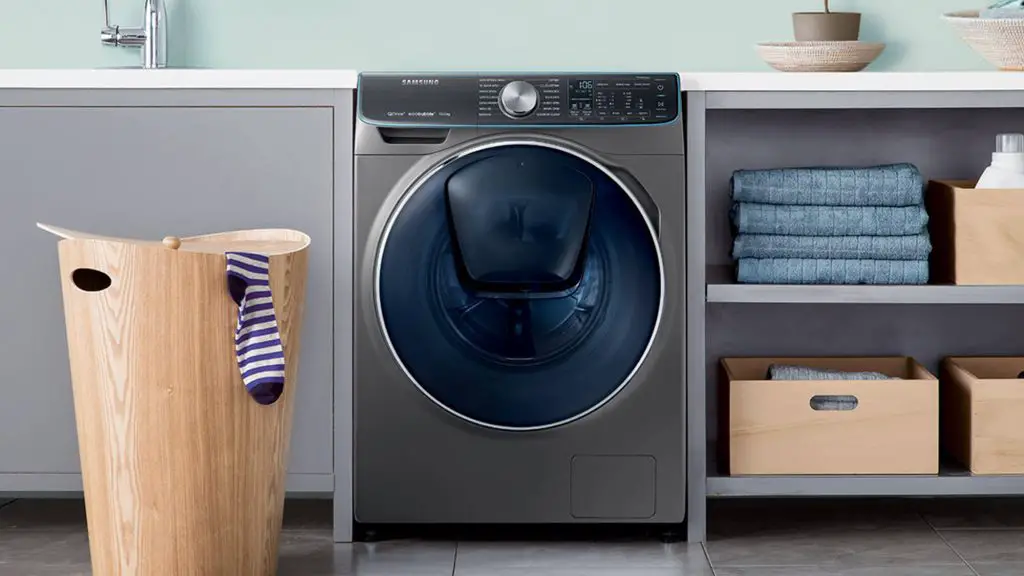When planning your laundry space, How wide is a washer and dryer? The width of a washer and dryer is a critical consideration when planning your laundry space. These essential appliances come in various sizes, but the standard width for a washer and dryer set is approximately 27 inches, making them a common choice for many households. This standardized width ensures compatibility with most laundry room layouts and cabinetry, simplifying the installation process.
However, it’s essential to note that there are also compact models available, typically measuring around 24 inches in width, which are ideal for smaller spaces or apartments. In this article, we’ll delve into the details of washer and dryer dimensions to help you make an informed choice for your laundry needs.
Standard washer and dryer sizes
Standard-sized washers and dryers are the most common type found in homes. These appliances are designed to handle large loads of laundry and are typically found in laundry rooms or dedicated spaces. The standard width of a washer is usually around 27 inches, while the dryer is slightly larger at approximately 29 inches. Both the washer and dryer are usually around 36 inches tall.
In terms of depth, washers and dryers can vary, but the standard depth is typically around 30 inches. It’s important to note that these dimensions can vary slightly between different models and brands, so it’s always a good idea to double-check the specifications of the specific washer and dryer you are considering.
The compact washer and dryer sizes
Compact washers and dryers are a great option for those who have limited space in their homes or apartments. These smaller appliances are designed to fit into tight spaces while still providing efficient and effective laundry capabilities. The width of a compact washer is usually around 24 inches, making it significantly smaller than a standard-sized washer. The dryer is also smaller, with a width of approximately 24 inches as well.
In terms of height, compact washers and dryers are generally around 33 inches tall, which is slightly shorter than their standard-sized counterparts. The depth of these appliances is typically around 26 inches, making them more shallow than the standard-sized models. These compact dimensions allow for easy installation in small spaces, such as closets or under countertops.
Common Dimensions for Top-Loading Washers and Dryers
Top-loading washers and dryers are a popular choice for many homeowners due to their ease of use and affordability. The dimensions of top-loading washers can vary, but the average width is around 27 inches, which is the same as a standard-sized washer. The height of a top-loading washer is usually around 43 inches, which includes the control panel and lid. As for the depth, it can range from 25 to 28 inches, depending on the specific model.
When it comes to top-loading dryers, they are typically the same width as the washer at approximately 27 inches. The height of the dryer can vary, but it is usually around 43 inches as well. The depth of a top-loading dryer is usually around 29 inches, which is slightly deeper than the washer. It’s important to note that these dimensions can vary between different brands and models, so always consult the specifications before making a purchase.
Common Dimensions for Front-Loading Washers and Dryers
Front-loading washers and dryers are known for their energy efficiency and modern design. These appliances are typically larger than top-loading models and can accommodate larger laundry loads. The width of a front-loading washer is usually around 27 inches, which is the same as a standard-sized washer. The height of a front-loading washer can vary, but it is generally around 39 to 41 inches, including the control panel and door.
In terms of depth, front-loading washers are typically deeper than top-loading models, with an average depth of around 32 inches. This extra depth allows for larger drum capacities and more efficient washing. As for front-loading dryers, they are usually the same width as the washer at approximately 27 inches. The height of a front-loading dryer is similar to the washer, ranging from 39 to 41 inches. The depth of a front-loading dryer is typically around 30 inches, making it slightly shallower than the washer.
Common Dimensions for Stackable Washer and Dryer Units
Stackable washer and dryer units are a popular choice for those who have limited space but still need the convenience of a full-sized washer and dryer. These units are designed to be stacked on top of each other, saving valuable floor space. The width of a stackable washer and dryer is usually around 27 inches, which is the same as a standard-sized washer.
When it comes to height, stackable units can vary depending on the specific model and configuration. However, the average height for a stackable washer and dryer is around 75 inches when stacked together. The depth of a stackable washer and dryer unit is typically around 32 inches, making it deeper than a standard-sized washer or dryer. It’s important to note that stackable units may require additional clearance space for installation and maintenance, so be sure to check the specifications before purchasing.
My Opinion
In conclusion, understanding the dimensions of washers and dryers is essential when shopping for these appliances. Whether you have ample space or are working with limited room, there are options available to suit your needs. From standard-sized to compact models, as well as top-loading, front-loading, and stackable units, the width, height, and depth can vary. By considering these dimensions and consulting the specifications of the specific washer and dryer you are interested in, you can ensure a proper fit and find the perfect size for your laundry needs.
Now that you have a better understanding of how wide a washer and dryer can be, you are ready to start your search. Remember to measure your available space and consider the dimensions of the appliances you are interested in. With the right information and careful consideration, you can find the perfect washer and dryer to meet your needs and make laundry day a breeze.




